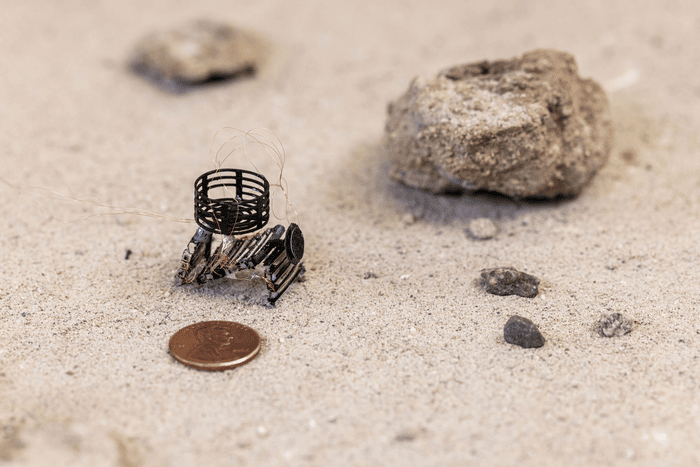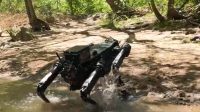A team of engineers at the University of California, Los Angeles (UCLA) has developed a new design strategy and 3D printing technique for building robots in one step. The research progress, published in the journal Science, shows the construction of various microrobots capable of walking, maneuvering and jumping.
The printed metamaterial consists of an internal network of sensory, mobile and structural elements that can move on its own as programmed. With the internal network for movement and sensing in place, the only external component required is a small battery to power the robot. Key to the new approach is the design and printing of piezoelectric metamaterials, complex lattice materials that change shape and move in response to electric fields, or generate electrical charges based on physical forces.
The study’s lead researcher, Xiaoyu Zheng, an assistant professor at UCLA’s School of Engineering, said the new approach will help develop a class of autonomous materials that could replace the current complex assembly process for making robots. The new approach tightly integrates complex motion, multiple sensing modalities, and programmable decision-making capabilities, similar to how nerves, bones and tendons in biological systems work together to execute controlled movements.
The research team demonstrated the integration of such robots with onboard batteries and controllers to enable fully autonomous operation of 3D-printed robots, each the size of a fingernail. These “meta-robots” are expected to lead to new designs of biomedical robots, such as self-steering endoscopes or “swimming robots” inside the body; in the future, they can also explore dangerous environments, such as rapidly entering confined spaces in collapsed buildings, assessing hazards Level up and look for people trapped in the rubble.
The researchers say their drive elements can be precisely placed throughout the robot for fast, complex and extended movements over various types of terrain. They also propose a method for designing robotic materials so that users can make their own models and print the materials directly into the robot.
The researchers demonstrated three “meta-robots” with different capabilities: one demonstrated the ability to get around S-shaped corners and randomly place obstacles; another could escape on impact; a third could walk on rough terrain, even small jumps




GIPHY App Key not set. Please check settings